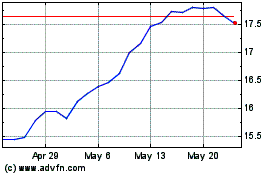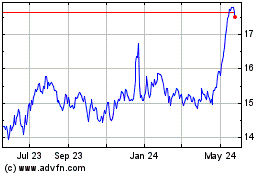The transportation industry occupies an important niche in the
world market and includes movement of freight and passengers
through different modes such as rail, trucks, ships, and air. It is
highly competitive, capital intensive and depends largely on the
global demand of exports and imports (Emerging Markets Dividend
ETFs).
Transportation ETFs represent a good investment opportunity
during an upswing in the markets. This is why they are often
considered to be a barometer of broad economic health, as they
indicate that more goods are being moved around, and business
activity is gaining strength.
While 2012 was a year of slow growth for the U.S. economy, broad
stock markets have remarkably risen this year. Leading indexes like
the S&P 500 have pushed higher and posted gains in these few
months of 2013 that usually take at least a year to accumulate.
This has resulted in many market segments surging higher, including
the transport industry.
Transportation Industry in Focus
In general the economic environment remains positive as
indicated by encouraging economic data with home sales and factory
sales supporting the growth picture. Employment data is also seen
to be rising, suggesting that passenger traffic could also be on
the upswing (Impact of Positive Jobs Data on ETFs).
Additionally, durable goods orders climbed 5.7% in February as
demand for transportation equipment rebounded. These positive
trends in the economy suggest that there is rising demand for the
movement of goods across many economic sectors, a situation which
has helped to boost the transport sector overall.
Moreover, the U.S. rail road sector appears to be in good shape
in 2013. The railroad industry is gaining largely from the ongoing
conversion of traffic from truckload to rail intermodal. Intermodal
is gaining popularity among shippers given its cost effectiveness
over truck.
We believe that intermodal will play an important role in
driving the rail industry based on the growing awareness among
shippers about its benefits. Currently, rail intermodal accounts
for over 20% of the railroads’ revenue, second in line after coal.
In the coming years, we expect this contribution to only rise given
the growing dependence of shippers on intermodal services.
Also, automotive shipments also form a significant part of rail
shipments, as automotive sales are set to recover from their
downturn in 2009 when U.S. sales hit their lowest in three
decades.
On the other hand, the U.S. trucking sector is also set for good
growth in 2013. After four years of suffering losses in freight
volume and revenue, the industry finally appears to be on the path
of recovery due to strong demand.
Increased opportunities related to more freight tonnage and
expanding revenue for companies across the U.S. indicate that the
industry will continue to see a rise in business.
Airlines also helping
However, going into 2013, the outlook for the global airline
industry is likely to remain clouded by the uncertain economic
backdrop, particularly the unsettled European situation. These
factors are expected to offset the positive impacts from increased
passenger traffic and an improved freight market (see Three Surging
ETFs with Strong Momentum).
The U.S. airline industry is expected to remain profitable over
the next two decades given the improving worldwide trends in air
travel. However, growth may be held back until 2015 due to the
increase in fuel costs.
Although U.S. airlines experienced sluggish growth over the last
few months, the demand for air travel will nearly double over the
next 20 years, as predicted by the U.S. Federal Aviation
Administration (FAA). Passenger enplanements are expected to grow
2.0% to $746 million in 2013 and about 3% in the future years,
reaching $1 billion by 2024 and $1.2 billion by 2032.
With this in mind, it could be time to give this segment a
closer look. For investors looking to play the transportation
sector, an ETF approach can be a solid idea.
This technique can help to spread out assets among a wide
variety of companies and reduce company specific risk for a very
low cost. Below, we highlight the ETFs in this sector any of which
could play the bullish trends in this segment:
iShares Dow Jones Transportation Average Fund
(IYT)
IYT represents the most popular way to track the transport
sector. Volume and AUM are both impressive, ensuring that the
product has tight bid ask spreads for virtually all investors.
Despite this, the product does have a relatively high expense
ratio, coming in at 46 basis points a year (Top Ranked
Transportation ETF in Focus).
The fund manages an asset base of $593.8 million and trades at
volume levels of more than 500,000 shares a day. This asset base is
invested in a small basket of 21 securities.
The ETF is heavily exposed to the railroad industry as this
segment makes up nearly 30% of the portfolio. Delivery services,
trucking and airlines also get double-digit allocation in the fund
with a share of 18.7%, 17.75% and 14.5%, respectively.
Top holdings include railroad operator Union Pacific at roughly
12.3% of assets while Kansas City Southern and FedEx take the next
two spots making up nearly 16.4% of the total assets between them.
The fund has delivered a year-to-date return of 14.4%.
SPDR S&P Transportation ETF (XTN)
XTN holds roughly 39 securities in its basket charging investors
just 35 basis points in fees. However, the fund does not appear to
be popular among investors as it has a very low trading volume and
a small asset base. The fund manages an asset base of $44.5 million
and trades at a volume level of 9,300 shares a day.
This fund is also heavily exposed to trucking and airlines as
they make up roughly 60% of the total. Beyond this, close to 35% of
the total goes to both air freight & logisitics, and railroad
companies, which pretty much round out the entire fund except for a
4% allocation to marine firms (Two Sector ETFs Posting Incredible
Gains).
Among individual holdings, Hertz Global Holdings Inc, Avis
Budget Group and Hunt J B Transportation Services Inc occupy the
top three positions in the fund with a share of 3.74%, 3.62% and
3.56%, respectively.
The fund has been a good performer to date as it delivered a
year-to-date return of 18.09%.
Guggenheim Shipping ETF (SEA)
iShares MSCI Thailand Investable Market Index ETF is designed to
track the performance of the Dow Jones Global Shipping Index. This
produces a fund which is home to 27 shipping company stocks.
The fund has been able to amass an asset base of $31.9 million
since its inception and trades at a volume level of 25,400 million
shares a day. While the ETF does not appear to be popular, its
performance has also not been quite remarkable. SEA is the worst
performing ETF in the list, delivering a return of -4.78% over a
period of one year.
The fund is also guilty of concentration, with company-specific
risk running high. The fund assigns 62.8% of the asset base to its
top 10 holdings. Among individual holdings, AP Moller, Nippon Yusen
and Mitsui Osk Lines take up a share of 17%, 7.99% and 7.63%,
respectively. The fund charges an annual fee of 65 basis
points.
Want the latest recommendations from Zacks Investment Research?
Today, you can download 7 Best Stocks for the Next 30
Days. Click to get this free report >>
ISHARS-DJ US TR (IYT): ETF Research Reports
GUGG-SHIPPING (SEA): ETF Research Reports
SPDR-SP TRANSPT (XTN): ETF Research Reports
To read this article on Zacks.com click here.
Zacks Investment Research
Want the latest recommendations from Zacks Investment Research?
Today, you can download 7 Best Stocks for the Next 30 Days. Click
to get this free report
US Global Sea to Sky Car... (AMEX:SEA)
Historical Stock Chart
From Jan 2025 to Feb 2025

US Global Sea to Sky Car... (AMEX:SEA)
Historical Stock Chart
From Feb 2024 to Feb 2025
